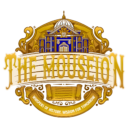Søren Kierkegaard is often regarded as the father of existentialism, a philosophy that centers on the individual and their subjective experience. His work delves deep into the nature of existence, emphasizing the importance of subjectivity in understanding one’s life. Central to Kierkegaard’s thought is the concept of the “leap of faith”—a profound shift from the finite realm of concrete reality to the infinite realm of possibilities and transcendence.
Kierkegaard’s philosophy is rooted in the distinction between these two realms. The finite realm encompasses our tangible existence—our interactions, relationships, and the temporal nature of life. It’s the world of actuality, where our lives unfold day by day. But to Kierkegaard, this realm is limited. It confines us to the here and now, trapping us in a cycle of mundane experiences.
On the other hand, the infinite realm represents boundless potential. It’s a realm of ideas, creativity, and transformation, where one can envision and pursue a different version of oneself. Kierkegaard believed that to live fully, one must navigate both realms—balancing the finite’s reality with the infinite’s possibilities. Focusing solely on the finite can lead to a life of conformity, while an exclusive focus on the infinite risks losing oneself in endless abstraction, never actualizing any of the possibilities.
The leap of faith, as Kierkegaard describes it, is the transition from the finite to the infinite. He uses the biblical story of Abraham and Isaac to illustrate this leap. Abraham’s willingness to sacrifice his son Isaac at God’s command epitomizes faith—a commitment to the infinite, even when it defies all earthly logic and morality. This act, for Kierkegaard, symbolizes the ultimate leap of faith: a complete trust in the infinite without any guarantee or certainty in the finite.
Kierkegaard also introduces the concept of the “knight of faith” and the “knight of infinite resignation.” The knight of infinite resignation renounces worldly desires and detaches from the finite realm, resigning themselves to the infinite’s ideals. This resignation involves a profound recognition of the limitations of the finite and a voluntary retreat into the infinite. However, the knight of faith takes this a step further. This figure embodies full faith in the infinite, even in the face of doubt, and continues to engage with the finite world, living a paradoxical life that harmonizes both realms.
Abraham, in Kierkegaard’s eyes, is the quintessential knight of faith. His actions are absurd because they defy human logic—yet, it is through this absurdity that Abraham is able to dwell in both the finite and infinite realms, retaining his relationship with God and his love for his son.
Kierkegaard’s exploration of these concepts is both enlightening and perplexing. The idea of balancing the finite and infinite resonates deeply, offering a lens through which to view the human condition. However, Kierkegaard’s own life presents a paradox. While advocating for a balance between these realms, he often leaned towards asceticism, withdrawing from the finite in pursuit of the infinite. This contradiction raises questions: Can one truly maintain such a balance, or does Kierkegaard’s struggle reflect the inherent tension between these realms?
Abraham’s ability to navigate both worlds is an ideal that Kierkegaard seems to admire, yet finds unattainable for himself. The knight of faith’s unwavering belief in the infinite, coupled with a life grounded in the finite, suggests a path that, while challenging, might offer a way to live fully. Yet, Kierkegaard’s intense introspection and philosophical rigor may have kept him from enjoying the very balance he sought.
Kierkegaard’s philosophy invites us to examine our own lives—our choices, our beliefs, and our struggles between the finite and infinite. It challenges us to consider the leap of faith, not as a blind jump into the unknown, but as a deliberate step toward living a life that acknowledges both the constraints of reality and the boundless potential of possibility.

